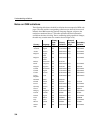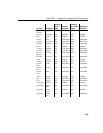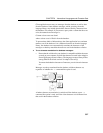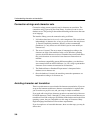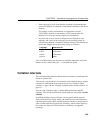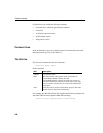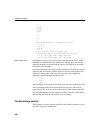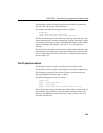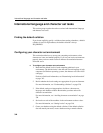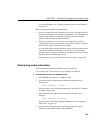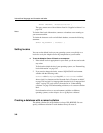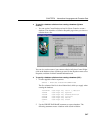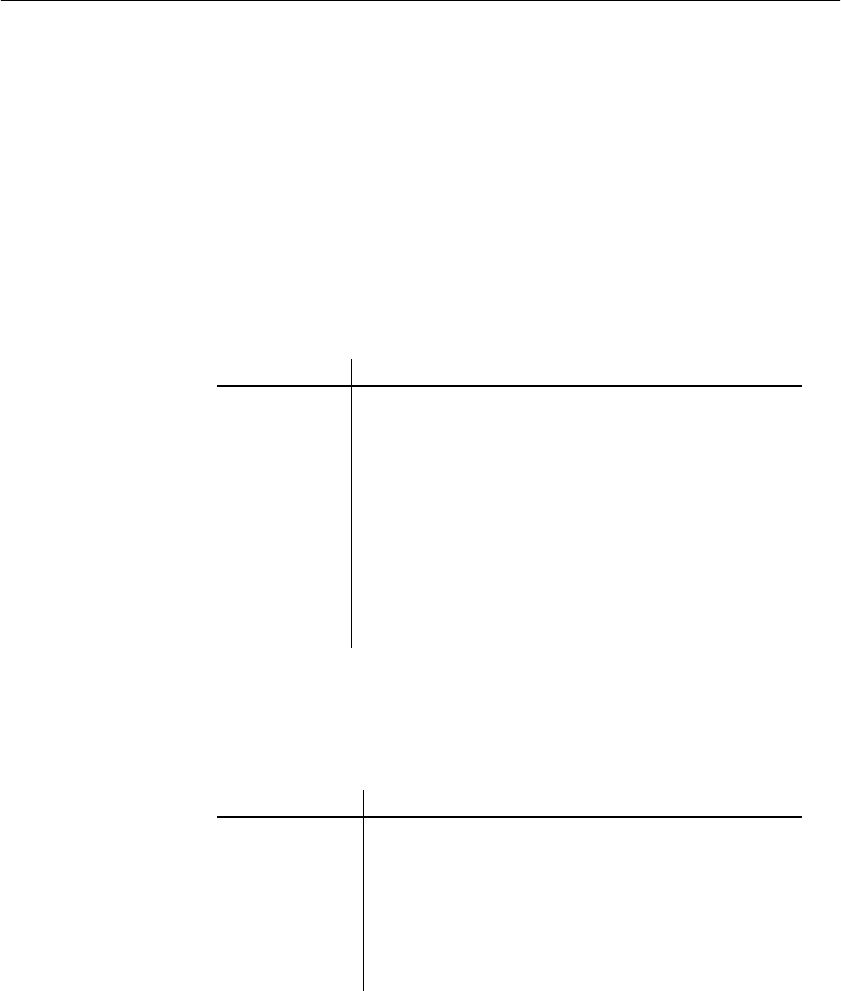
CHAPTER 9 International Languages and Character Sets
341
The collation sequence section
After the title line, each non-comment line describes one position in the
collation. The ordering of the lines determines the sort ordering used by the
database, and determines the result of comparisons. Characters on lines
appearing higher in the file (closer to the beginning) sort before characters that
appear later.
The form of each line in the sequence is:
[
sort-position
] :
character
[ [,
character
] ...]
or
[
sort-position
] :
character
[
lowercase
uppercase
]
Descriptions of
arguments
Multiple characters may appear on one line, separated by commas (,). In this
case, these characters are sorted and compared as if they were the same
character.
Specifying character
and sort-position
Each character and sort position is specified in one of the following ways:
The following are some sample lines for a collation:
% Sort some special characters at the beginning:
Argument Description
sort-position Optional. Specifies the position at which the characters on
that line will sort. Smaller numbers represent a lesser value,
so will sort closer to the beginning of the sorted set.
Typically, the sort-position is omitted, and the characters sort
immediately following the characters from the previous sort
position.
character The character whose sort-position is being specified.
lowercase Optional. Specifies the lowercase equivalent of the character.
If not specified, the character has no lowercase equivalent.
uppercase Optional. Specifies the uppercase equivalent of the character.
If not specified, the character has no uppercase equivalent.
Specification Description
\dnnn Decimal number, using digits 0-9 (such as \d001)
\xhh Hexadecimal number, using digits 0-9 and letters a-f or A-
F (such as \xB4)
’c’ Any character in place of c (such as ’,’)
c Any character other than quote (’), backslash (\), colon (:)
or comma (,). These characters must use one of the
previous forms.




